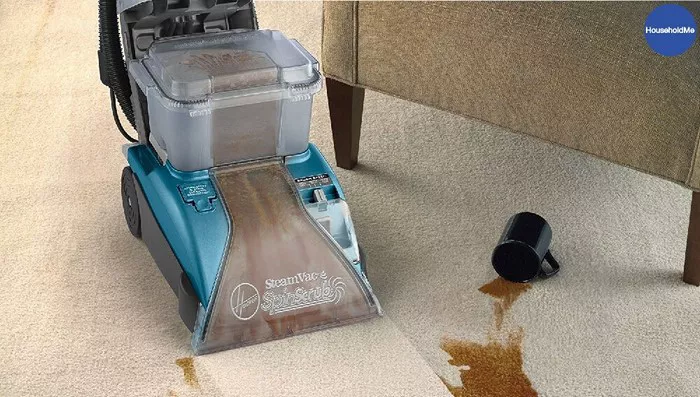Before the invention of the carpet sweeper, cleaning carpets was a laborious and time-consuming task. Homeowners had to rely on manual methods such as beating and sweeping to remove dirt and debris from their carpets. This process was not only inefficient but also failed to clean thoroughly, leaving carpets embedded with dust and grime. The invention of the carpet sweeper revolutionized carpet cleaning, providing a practical and effective solution to a common household problem. This article delves into the origins of the carpet sweeper, the frustrations that led to its invention, and its evolution over the years.
In 1876, the carpet sweeper was invented by Melville Bissell, a name that would become synonymous with carpet cleaning. This simple yet ingenious device transformed the way people maintained their carpets, leading to cleaner homes and less strenuous cleaning efforts.
See also: How Does a Wet Dry Vacuum Work: A Quick Guide
The Frustration that Led to Innovation
The story of the carpet sweeper begins with Melville Bissell and his wife, Anna, who ran a small crockery shop in Grand Rapids, Michigan. The shop, like many others at the time, had a carpeted floor to create a welcoming environment for customers. However, the daily handling of pottery and ceramics resulted in sawdust and dirt being embedded into the carpet, making it difficult to keep clean.
Anna Bissell, frustrated with the constant battle against the dust in their shop, expressed her dissatisfaction to her husband. The traditional methods of cleaning were simply not effective enough, and the repetitive manual labor was tiresome. This common household problem became the catalyst for innovation.
Birth of the Carpet Sweeper (1876)
Melville Bissell, being mechanically inclined and possessing a keen interest in solving practical problems, set out to design a solution. His goal was to create a device that could efficiently remove dirt and debris from carpets without the need for excessive manual labor.
In 1876, after much experimentation and ingenuity, Bissell invented the first carpet sweeper. The original design featured a simple yet effective mechanism: a rotary brush powered by wheels. As the sweeper was pushed across the carpet, the wheels turned the brush, which in turn swept up dirt and debris into a container. This innovative design allowed for easy and thorough cleaning of carpets, significantly reducing the effort required.
The early carpet sweeper was a mechanical marvel of its time. It did not require any electricity, relying solely on manual operation. This made it accessible to a wide range of households, regardless of their economic status or access to electricity.
From Invention to Business (1876-1883)
The carpet sweeper quickly gained popularity among the Bissells’ friends and customers. People were impressed by the efficiency and ease of use of the device, and word of its effectiveness spread rapidly. Recognizing the potential for a successful business venture, Melville and Anna Bissell decided to commercialize their invention.
In 1883, Bissell officially began selling his carpet sweepers. The company, initially small and family-run, soon expanded as demand for the product grew. The carpet sweeper became a household staple, praised for its ability to keep homes clean with minimal effort.
Anna Bissell played a crucial role in the business’s success. After Melville’s untimely death in 1889, she took over the company, becoming one of the first female CEOs in America. Under her leadership, Bissell continued to innovate and expand, solidifying its place as a leading manufacturer of cleaning devices.
See also: What are the Disadvantages of Robotic Pool Cleaners?
Global Impact and Modern Evolution
The success of the carpet sweeper in the United States quickly spread to other countries. In the UK, for example, the Ewbank model became a popular choice for homeowners seeking an efficient carpet cleaning solution. The simple design and effectiveness of the carpet sweeper made it an attractive option for people worldwide.
As technology advanced, so did the design and functionality of the carpet sweeper. Modern versions have evolved to include battery-powered models, making them even more convenient and efficient. These contemporary carpet sweepers offer powerful suction and are designed to handle a variety of floor types, from carpets to hardwood.
Battery-powered carpet sweepers combine the original principles of mechanical operation with modern technology. They are lightweight, easy to maneuver, and provide a quiet cleaning solution compared to traditional vacuum cleaners. These advancements have ensured that the carpet sweeper remains a relevant and useful tool in modern households.
Conclusion
The invention of the carpet sweeper by Melville Bissell in 1876 marked a significant milestone in the history of household cleaning. This simple yet effective device transformed the way people cleaned their carpets, making the process more efficient and less labor-intensive. From its humble beginnings in a small crockery shop to becoming a global household name, the carpet sweeper has had a profound impact on cleaning routines.
The continued evolution of the carpet sweeper, from manual designs to modern battery-powered versions, reflects the ongoing innovation in the field of cleaning machines. As technology advances, we can expect further improvements that will make cleaning even easier and more efficient. The legacy of the carpet sweeper is a testament to the power of innovation in solving everyday problems and improving quality of life.

